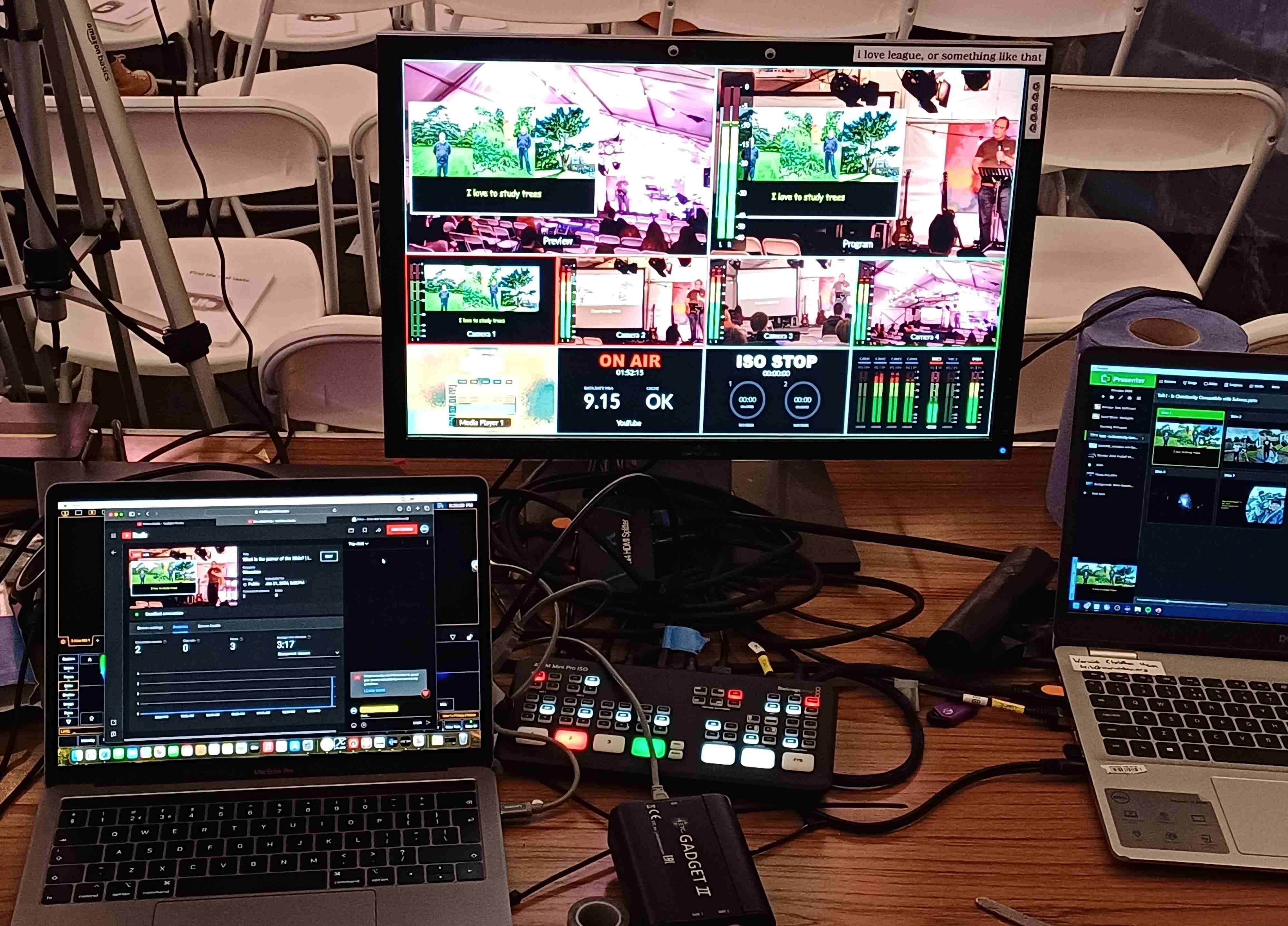Video
Information about a Video Designer's responsibilities throughout the show process can be found on the Shows pages.
Video has a simple job: film an event (be it a show, competition, etc). The feed can then be saved for later and/or livestreamed to YouTube/Twitch. Whilst they are similar, a livestream often comes with a much more complex and technical challenge.
Show Recording
Sometimes the cast in a show may want it recorded. This is normally quite simple. Find an iPad or simple camcorder, ensure you have enough spare space on the memory card to store the entire event, click record. Done!
Sometimes shows will want multiple camera angles. The simplest way to do is to use the steps above but multiplied out across separate cameras. Then, after the hire has finished, combine them into one video in some form of editing software (see below for a list of recommended video editing).
Livestreaming
Recording but 🌟live🌟. This is a lot more complex, all the cameras need to be linked to a central location that then streams the video to the internet (be it YouTube, Twitch, FaceBook, Instagram, ...). There are 3 main sections: cameras, linking cameras to switcher, switcher.
Cameras
Similar to a show recording, cameras are relatively simple: ensure that the central focus of an event is always being recorded. This can be done with a combination of static and dynamic cameras.
Static cameras are simple: simply setup the camera, ensure it has power, then make sure no one knocks it over.
Dynamic cameras are complex and often require a dedicated operator to move the camera where necessary. As an operator, your job is to keep the subject in frame. This subject should be pre-communicated to you by the director. The key thing to remember is to keep a steady and smooth shot when live. Some cameras will show whether you're live or not via a tally light illuminating red or by the director directly telling you you're live. Always ask if unsure.
Note: a fluid head tripod makes steady camera moves a lot easier!
Linking cameras
This is the process of getting the video feed from a camera to some central location, be it wired or wireless.
HDMI
Ideal for short (< 15m) runs, simple easy and most cameras support them.
HDMI over ethernet
Sends an HDMI signal over ethernet (good for up to 100m). Note requires both a transmitter and receiver
SDI
Professional standard can do up to 300m, often used for professional equipment, I'd be surprised if you ever need to use it, but it as an option (AV services have a couple adapters)
Video Switching and Direction
So you've got all the video feeds to one location, now to combine them all. This can be done through a dedicated switcher (ATEMs) or software (OBS).
Video switching is where you take the best shot, and choose that to be shown live on air. This can be cutting to a different camera angle, adding graphics, or cutting to a pre-recorded video, whatever you feel necessary at the time.
Often you will be on cans to the camera operators, in order to let them know they are about to be live a version of the following should occur:
"Ready Camera X" - you "Ready" - camera operator "Cut" - you
At this point you know there shot is ready to be put on air. Where possible, give camera operators direction to improve their shot, for example how to frame it etc.
There are a variety of switchers available. My preference is ATEMs (dedicated hardware switchers designed by blackmagic). A good tutorial for ATEMs is provided by Zebra Zone: https://www.youtube.com/watch?v=AYjogcP-GXY and https://www.youtube.com/watch?v=N-14ZEBibWg
Equipment
TechCrew itself does not own any dedicated video equipment but a variety of societies and entities across campus do, listed on the Equipment & Services Directory
